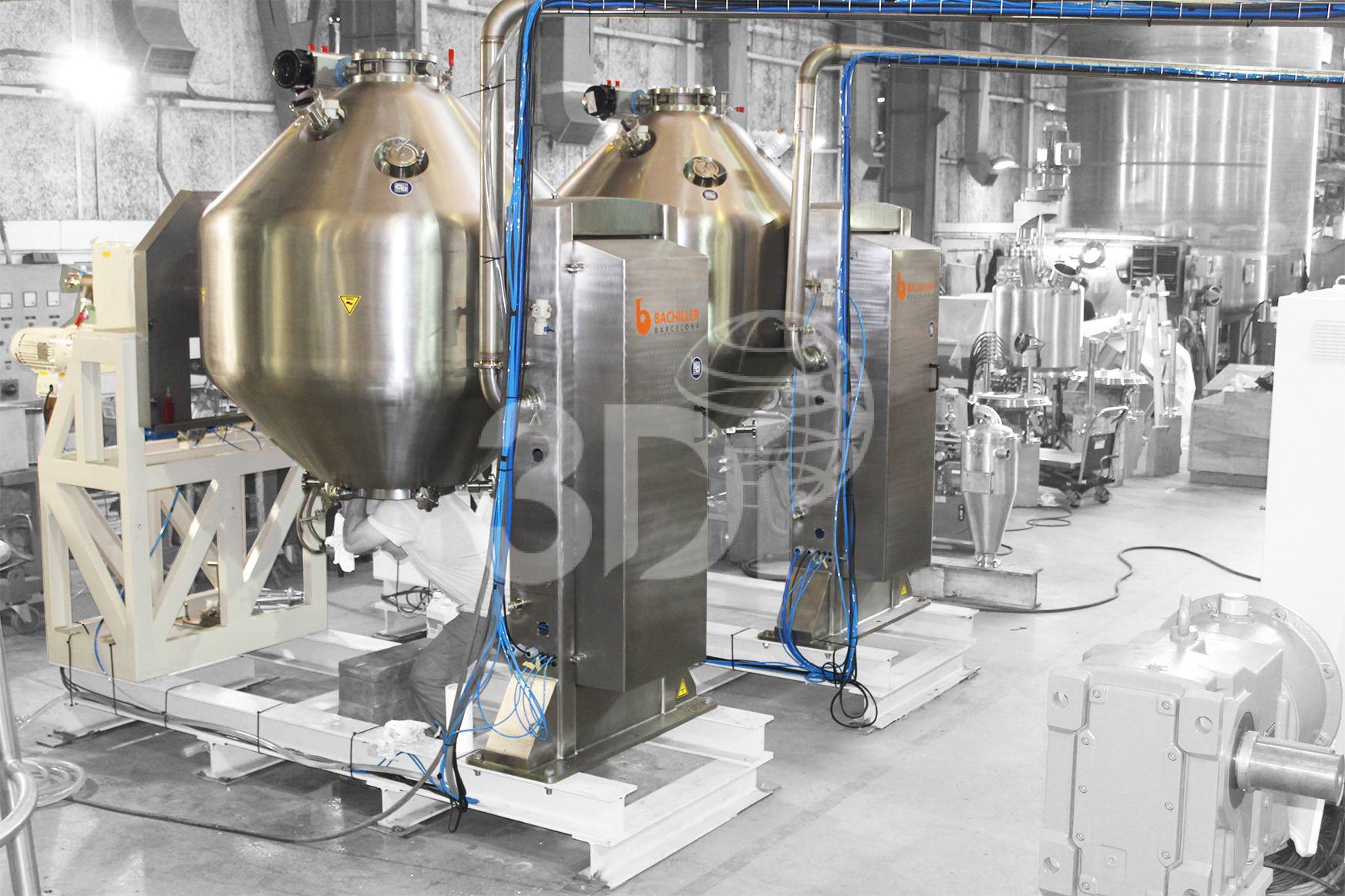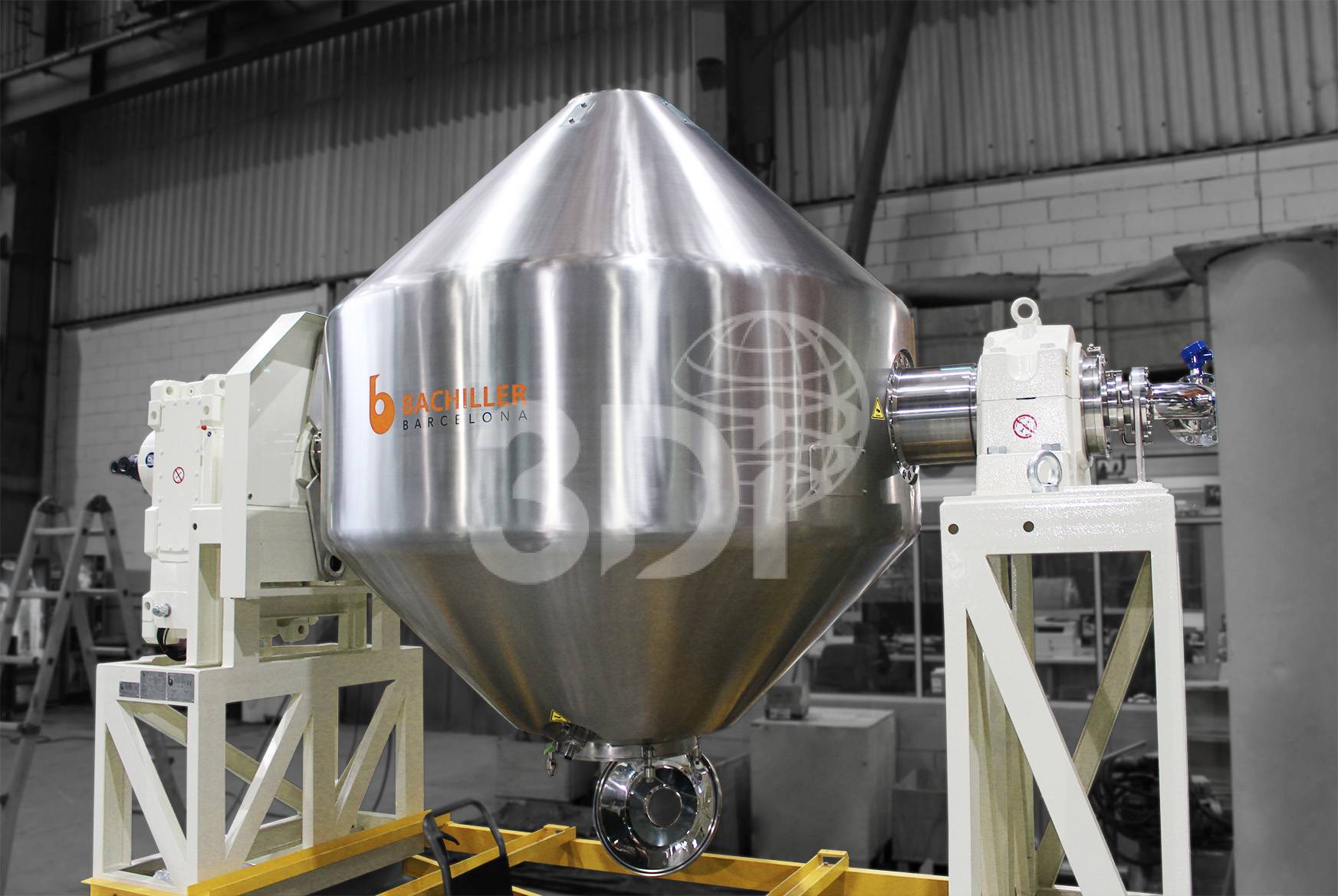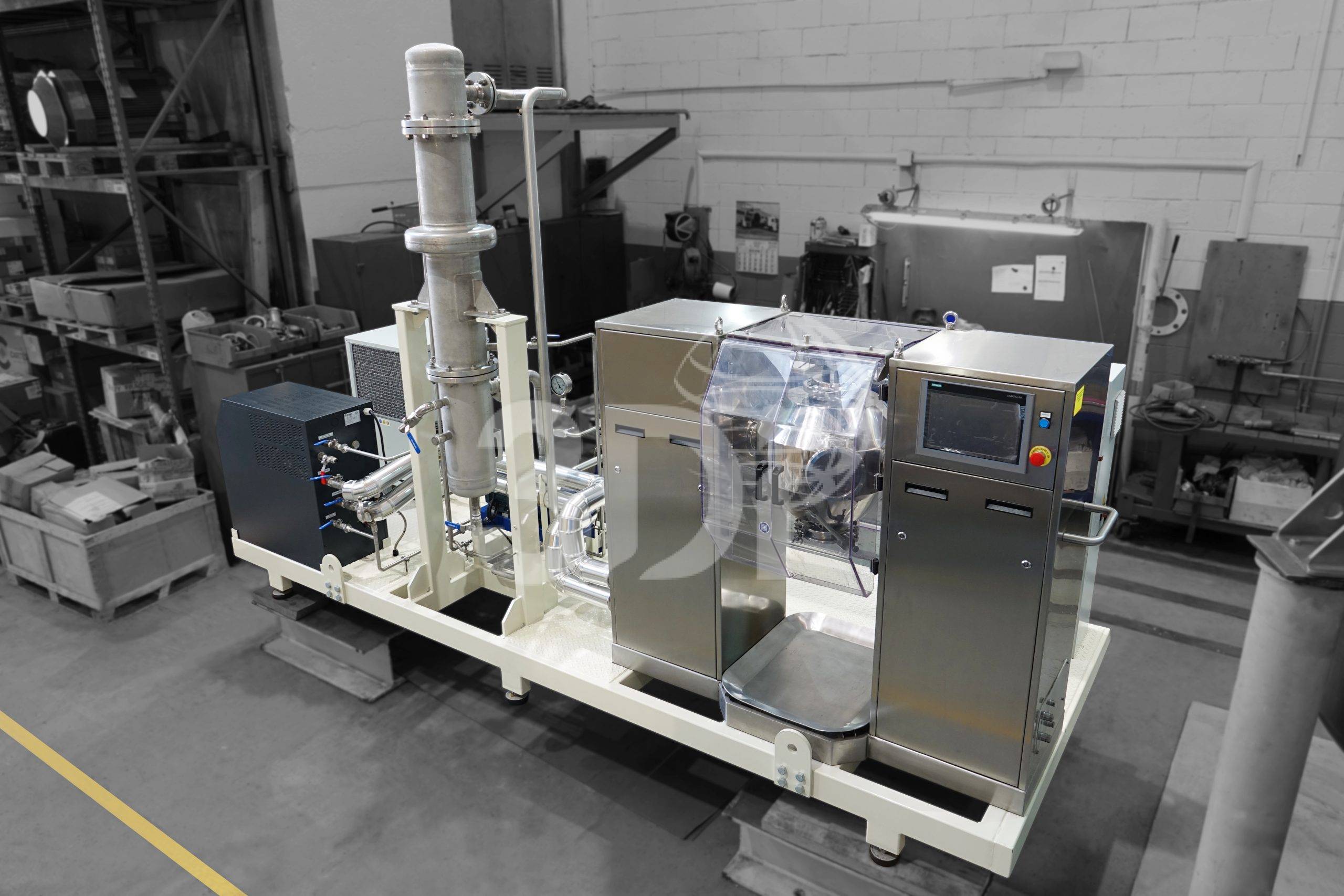Stock #2865-1-1-1
1 In Stock
Double Cone Vacuum Dryer
Specification
Description
The Bicuum Double Cone Vacuum Dryer is a rotating, batch-style vacuum dryer designed for the gentle drying of heat-sensitive, oxygen-sensitive, or solvent-rich materials. The Bicuum dryer uses a double-cone shaped vessel that rotates slowly to ensure uniform drying without internal agitators or scrapers, making it ideal for fragile or crystalline products.
The double cone vacuum dryer:
- Works under vacuum to lower drying temperature,
- Has a rotating double-cone vessel for gentle, even drying,
- Is fully enclosed and typically cGMP-compliant,
- Is perfect for delicate powders, crystals, or granules.
| Component | Description |
| Double-cone chamber | Symmetrical, rotating vessel for tumble drying and mixing. |
| Vacuum system | Allows drying at low temperatures and safe solvent removal. |
| Jacketed body | Indirect heating via hot water, steam, or thermal oil. |
| Rotating mechanism | Slowly turns the cone to expose all product surfaces evenly. |
| Sanitary design (Bicuum) | cGMP-compliant, mirror-polished interiors, optional CIP/SIP. |
| Condensation unit | Collects solvent vapours for recovery or safe disposal. |
- Loading: Wet solid or slurry is loaded into the cone.
- Vacuum & Heating: Vacuum is applied; jacket heats the vessel.
- Tumbling Action: As the vessel rotates, the material is continuously mixed without high shear.
- Drying: Moisture/solvent evaporates and is removed via vacuum and condensed.
- Discharge: Once dry, the product is discharged through a bottom or side outlet.
- Gentle drying – no agitators; ideal for fragile crystals or sensitive products.
- Uniform drying – tumble action ensures even exposure to heat.
- Low contamination risk – closed system with minimal product handling.
- Efficient solvent recovery – via integrated vacuum and condenser systems.
- GMP-compliant – suitable for pharmaceutical and fine chemical use.
- Low maintenance – fewer moving internal parts than paddle or ribbon dryers.
- Pharmaceuticals – drying of APIs and intermediates.
- Fine chemicals – thermally sensitive or expensive compounds.
- Nutraceuticals – botanical extracts, vitamins.
- Food ingredients – flavors, powders, and proteins.
- Metal powders – where oxidation must be avoided.




